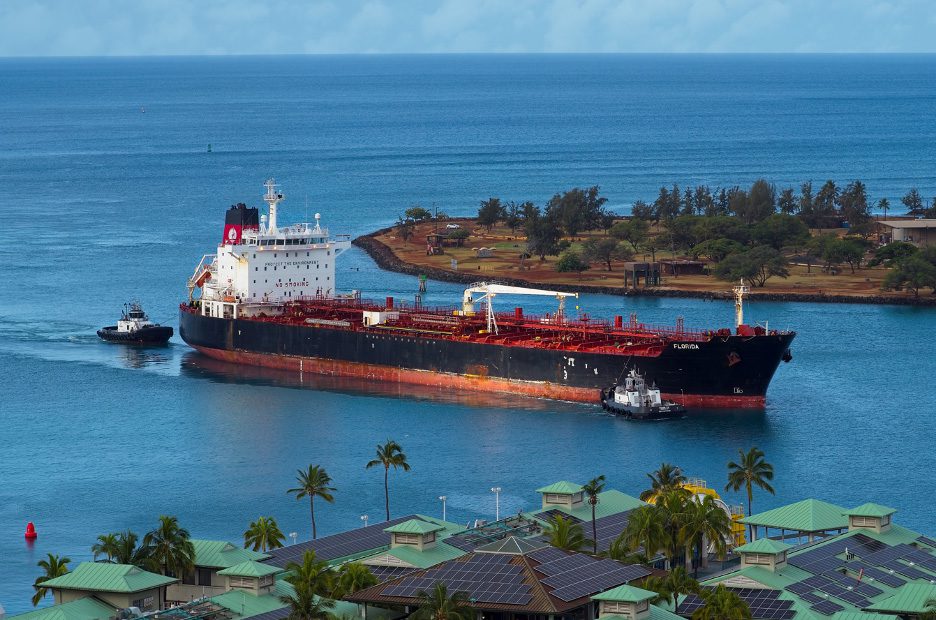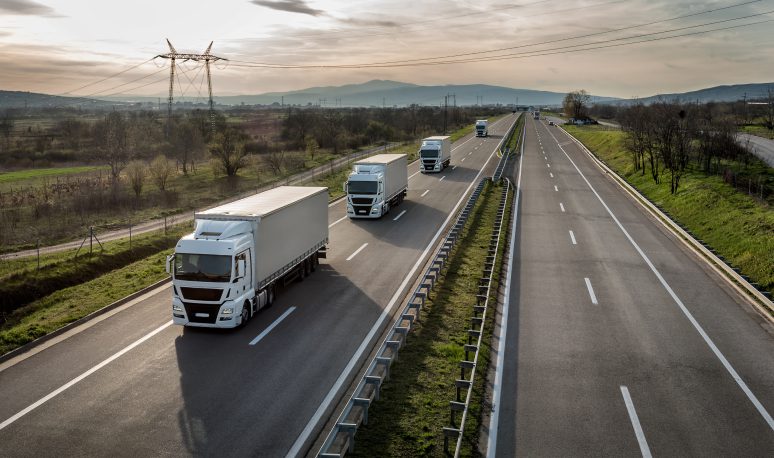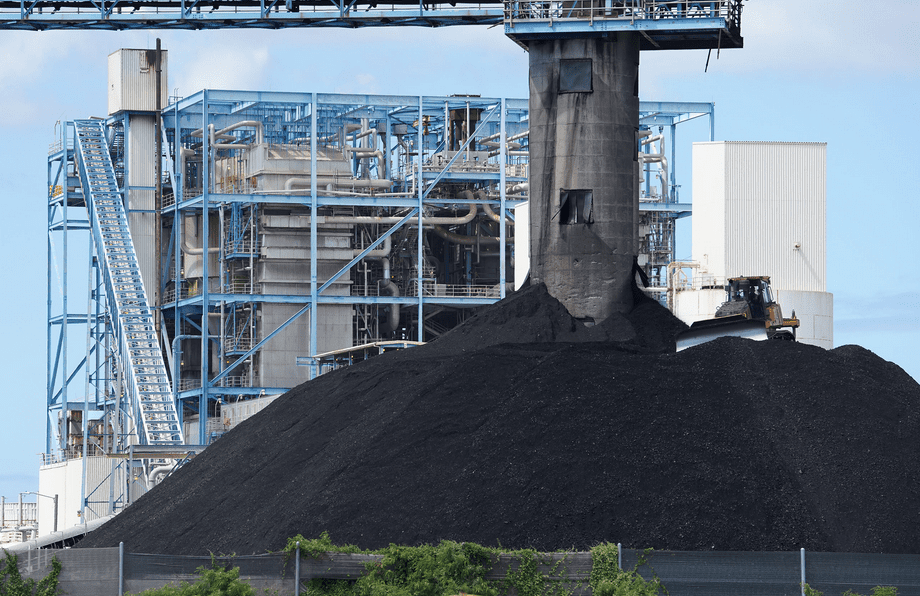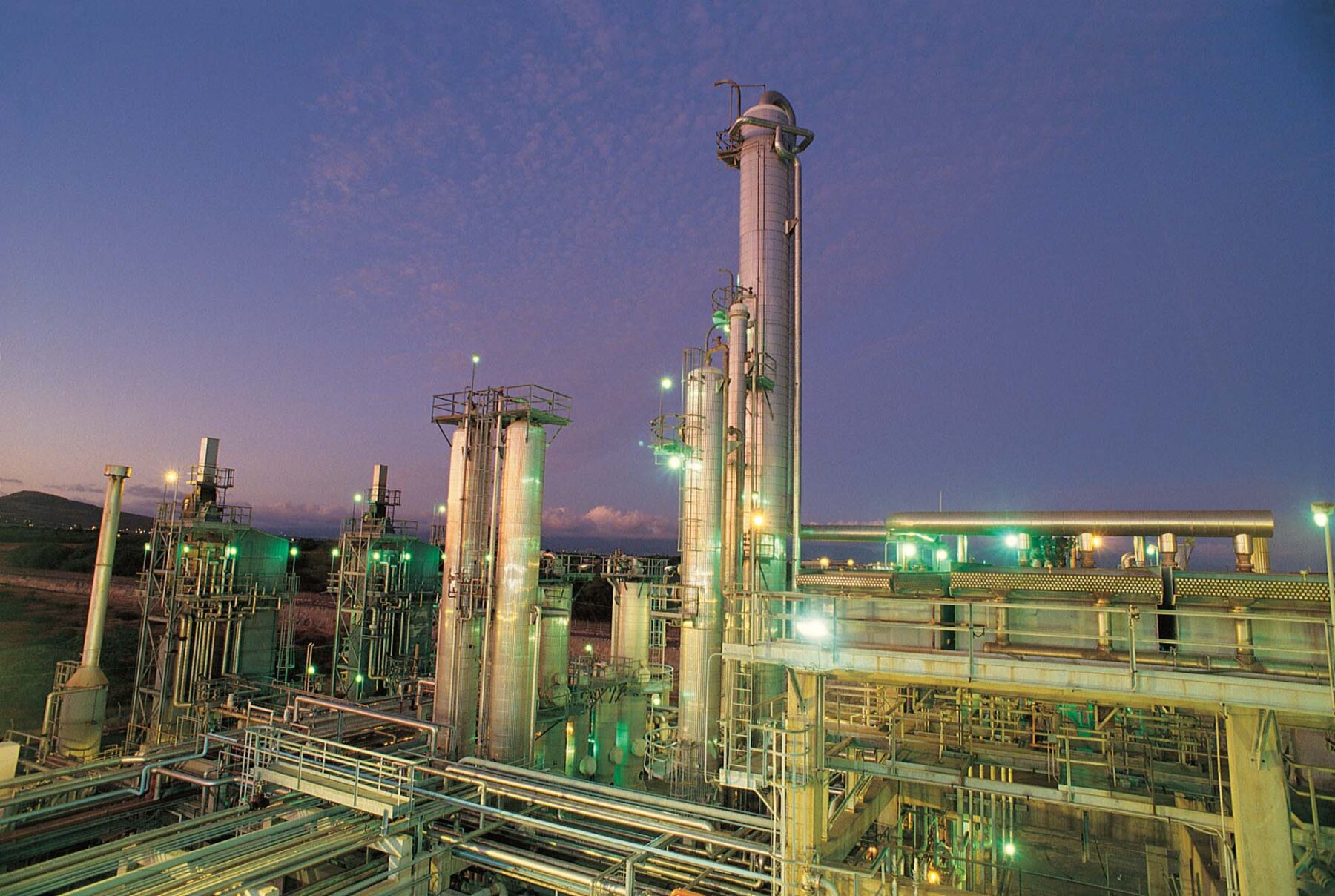
NON-RENEWABLE ENERGY SOURCES
Most of Hawai‘i’s oil is imported from foreign countries. The state still depends on fossil fuel for transportation and electricity generation.


LIQUID FUELS
Liquid fossil fuels are transported across the Pacific Ocean, primarily from foreign countries, and are offloaded in waters off Oʻahu before being refined, repackaged, and barged to other islands. This results in a tenuous energy situation that depends on factors outside Hawai‘i’s control. Hawai‘i has historically used liquid petroleum products primarily to make transportation fuels and generate electricity. In addition, vessels of liquid fossil fuel moving throughout the Hawaiian Islands regularly pose a risk to the marine environment. Further, the burning of fossil fuels contributes to the state’s greenhouse gas emissions, which contributes to the global climate crisis.
Photo courtesy of Bill Marhoffer, Oil tanker being tugged into Honolulu Harbor.
MAP OF INCOMING SOURCES OF OIL
Hawai‘i imports refined petroleum products as well as crude oil that is later refined on Oʻahu and distributed statewide. Most of the crude oil is imported from foreign countries. The dashboard below reveals the countries of origin for imported oil into Hawai‘i from 2009 to the present day. As of March 2022, Hawai‘i no longer receives oil or other petroleum products from Russia.
COAL
As of September 1, 2022, coal will no longer be a source of energy in Hawai‘i. The last coal plant in the state, located on Oʻahu, is set to retire on that date and its output will be replaced with renewable energy. For more information on the retirement of the coal plant, see the Powering Past Coal Task Force webpage.


NATURAL GAS
Some Hawai‘i residents also rely on natural gas for cooking, water heating, and other energy needs. Hawai‘i’s only natural gas provider is Hawai‘i Gas, which has been servicing Hawai‘i since 1904 and is the only franchised gas utility in the State of Hawai‘i. Hawai‘i Gas maintains both regulated utility gas and non-utility propane distribution operations, serving nearly 70,000 customers and employing approximately 350 people across the islands.
Hawai‘i Gas maintains 1,100 miles of gas pipeline infrastructure mostly on O‘ahu to deliver gas energy that is produced at its synthetic natural gas (SNG) plant. Hawaii Gas’ gas energy mix includes SNG, hydrogen and since 2018, renewable natural gas (RNG). Hawai‘i Gas captures and processes renewable natural gas or biogas from the City and County of Honolulu’s Honouliuli Wastewater Treatment Plant on O‘ahu. This facility has the capacity to produce up to 800,000 therms of energy per year, enough gas for more than 6,000 homes.
Hawai‘i Gas also services customers statewide using propane tanks and other distributed infrastructure with bulk storage facilities on every major island.
Photo of Hawai‘i Gas synthetic natural gas facility at Campbell Industrial Park, O‘ahu.
Hawai‘i’S FOSSIL FUEL DEPENDENCE AT A GLANCE:
Click below to view a map of fossil fuel projects in Hawaii. Disclaimer applies.
Please view map on a bigger screen.
